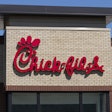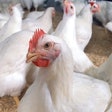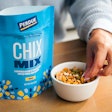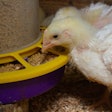Foster Farms has joined the growing ranks of U.S. poultry producers who have made pledges to reduce antibiotic usage in their broiler operations this year. I definitely agree with the approach that poultry companies such as Foster, Perdue, Tyson and Cargill have chosen of reducing antibiotic usage on a voluntary basis, in advance of any possible new regulations, and attempting to get a marketing boost out of it. How big the marketing boost will be remains to be seen, but consumer interest and preferences are moving toward more “natural” foods produced using less additives, pesticides, herbicides and antibiotics.
Giving the customer what they want is a key facet of any winning strategy, but I read an article recently, The war on big food, that got me thinking about the importance of doing antibiotic-free chicken in a cost-efficient manner. In the article, Will Papa, chief research and development officer, the Hershey Company, explained that consumers have changed and that, today, even something like a candy bar should also be “good for you.”
This idea that even a food that is considered an indulgence should be good for you is held by what Papa calls the “unreasonable consumer.” He said, “It used to be I could have great cellphone coverage and pay a premium for it, or I could have slightly lesser coverage and get a deal,” he said. “Now consumers want great cellphone coverage all the time and the deal. Because they are getting it in many places, they now expect it everywhere.”
The “unreasonable consumer” is going to want poultry raised without antibiotics and they aren’t going to want to pay more for it, at least not much more for it. This means poultry companies are going to need to not only reduce the amount of antibiotics they use in growing programs, but they also are going to have to be very efficient while doing it.
We have all heard the arguments about how much feed conversion and rate of daily gain are lost by going antibiotic free. If every poultry producer embarked on a raised-without-antibiotics program at the same time, ultimately supply and demand would result in consumers picking up whatever the average additional cost is in raising poultry without antibiotics. But that isn’t what is happening in the U.S. market. Some companies are changing their growing programs to reduce or eliminate antibiotic use and others aren’t. The marketplace is going to pick out the winners and losers.
I think the ultimate winners will be the companies that reduce antibiotic usage in growing programs in a manner that allows them a marketing advantage and still allows them to be competitive from a cost standpoint. The winners of the future will develop programs to routinely grow healthy birds with good performance with minimal drug use.
















